object — WIRED Magazine, Issue 1
The more things change, the more they stay the same.
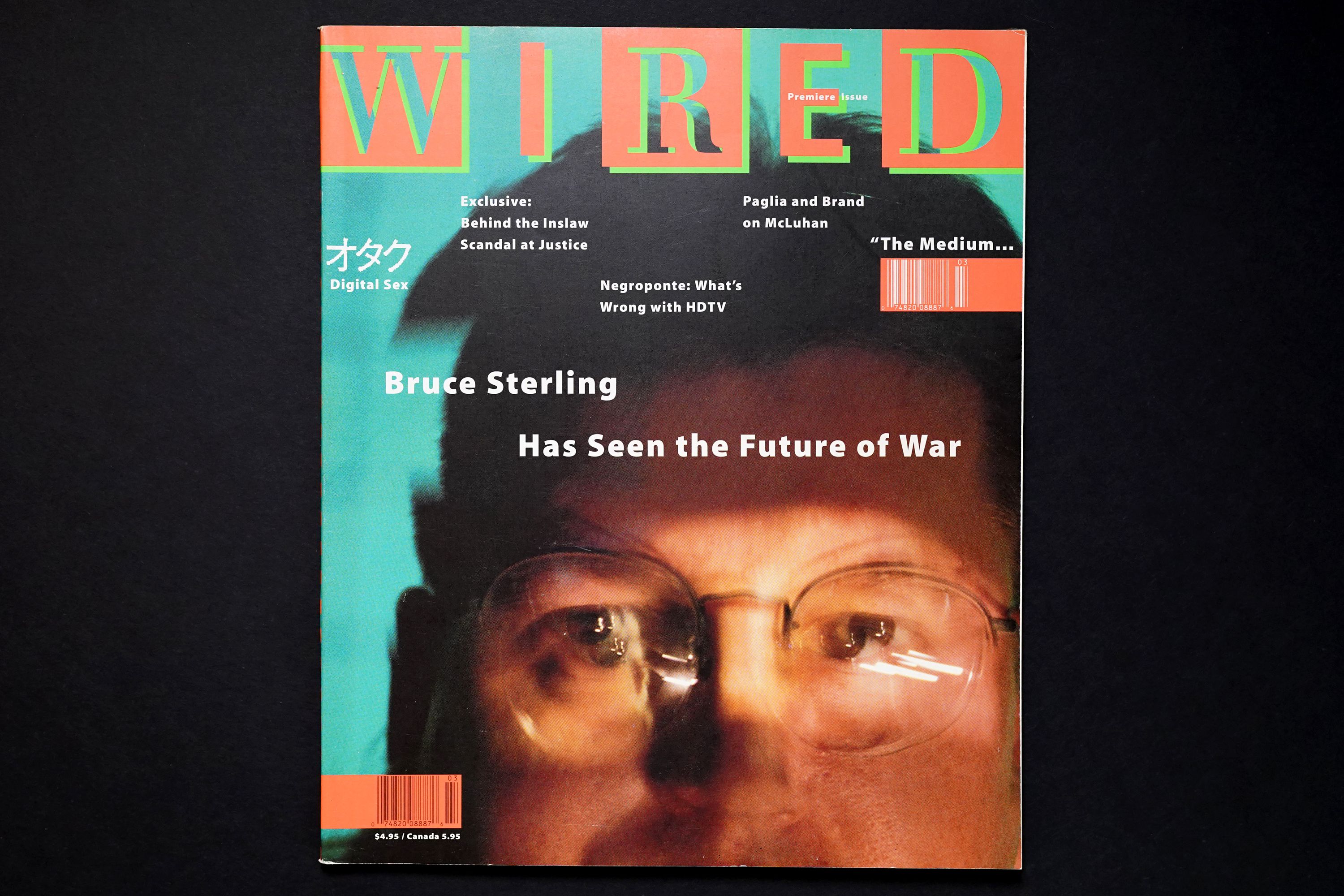
WIRED Magazine published its first issue in March/April of 1993 — thirty years ago.
It was almost immediately considered an index of the zeitgeist of the 1990s. In hindsight, that was a stretch of a claim to have been made from within the time but also absolutely right. The farther away from the 1990s we get, the more condensed it will be, and I suspect its irreducible byline will always have something to do with technology. That was WIRED’s focus: technology and its culture.
As unique as it felt in 1993, WIRED didn’t emerge from a vacuum. It was created by Louis Rossetto and Jane Metcalfe, both of whom had previously worked for a magazine published in Amsterdam called Electric Word, which focused on technology and language. It was known for its cutting-edge design — it was both the first magazine to publish an issue made entirely using desktop software and the first to feature a cover image created in Photoshop. Kevin Kelly, who would later work with Rossetto and Metcalfe as Executive Editor of WIRED, wrote in spectacularly 90s vernacular that Electric Word was “the least boring computer magazine in the world.” Electric Word made that its tagline.
These anecdotes from WIRED’s history create a sort of ambient persona by and for whom WIRED was created. There’s a little bit of slacker, of punk, of geek, and of intellectual wrapped up in describing something as “least boring,” isn’t there? — not least of which a computer magazine. By 1993, the most popular computer magazines of the previous two decades were winding down: BYTE and Compute!, both having run from the 1970s, were finished within a few years of WIRED’s debut. And to be fair, BYTE was incredibly boring, and for the design-minded, quite the bait and switch. They were well-known for their artful covers, less so for their black-and-white, phonebook-quality, dry-as-death interior.
One last interesting tidbit from WIRED’s history is the history-that-somehow-was-not. It’s impossible for me to disassociate WIRED from OMNI. For me, OMNI seems to loom in the background, oddly uncredited and disconnected from the history of WIRED. But what WIRED was for the 1990s, OMNI was for the 1970s and 1980s. Both were about technology and culture. Both wove journalistic fabric with technological threads that spread over extremely diverse topical terrain — perhaps OMNI even more so. But back to the Rossetto connection: It turns out that though Rossetto never worked for OMNI (as far as I can tell), he did ghostedit a book about the making of OMNI publisher Bob Guccione’s notorious film, Caligula, called Ultimate Porno.
The Design of WIRED
The visual language of the first decade of WIRED was an aesthetic expression of what the explosion of consumer-ready technology felt like at the time. It was bright, chaotic, glitchy, and layered.
It’s too easy to look back on the 1990s through the lens of the media that closed out the decade and assign a kind of pessimism to its entire span. But most of the 1990s were almost glibly optimistic. The United States, especially, was riding on a cultural, economic, technological, and hegemonic high that intoxicated most foresight.
No wonder we were so caught off guard by the early 2000s…

Anyway, as far as I’m concerned, WIRED looked — and still looks — fantastic. It wasn’t 100% there in its first issue, of course. Flipping through it makes clear that there were many different attempts at gathering a coherent art direction, not all of which worked.
For me, the messiness is part of its charm.
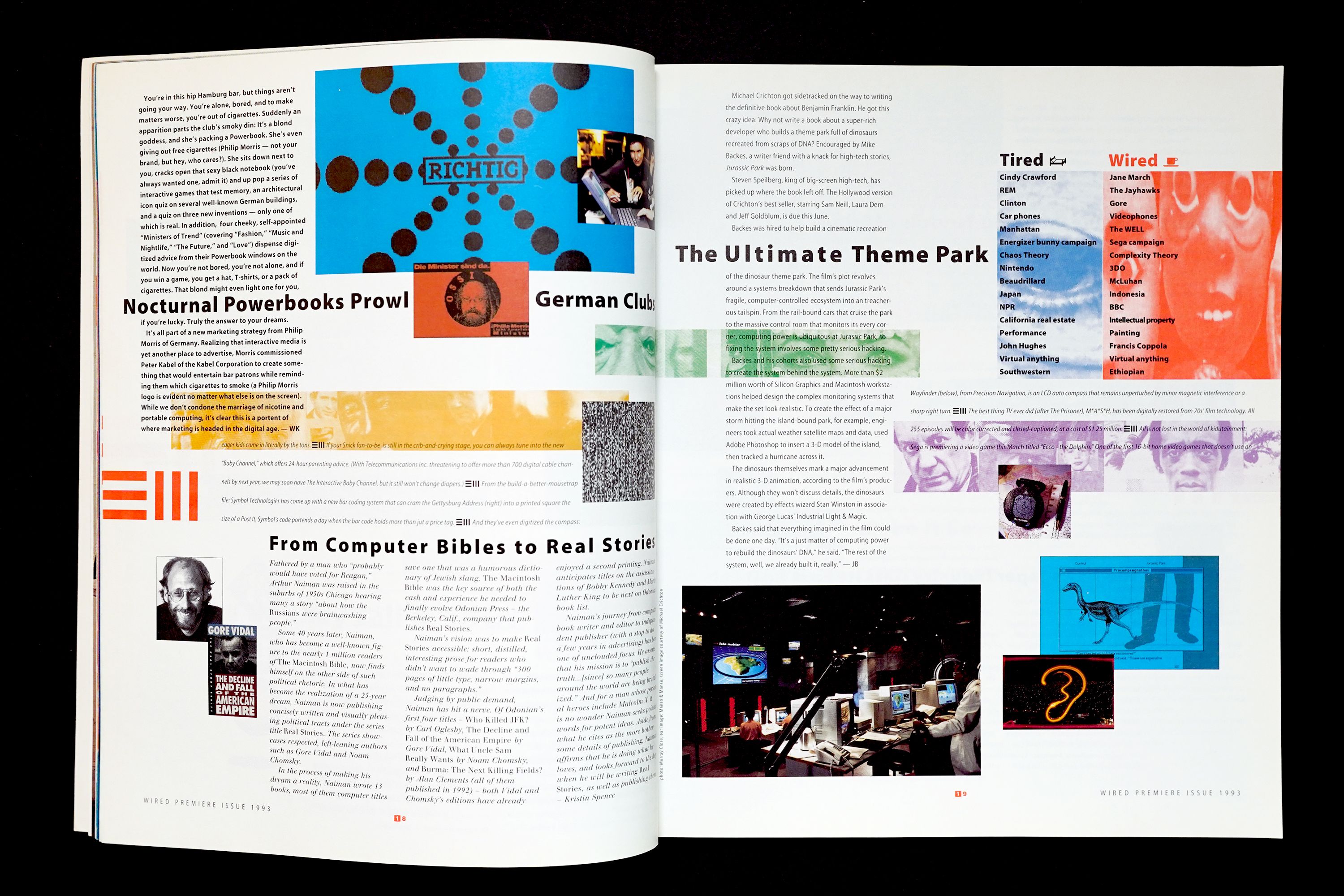
This spread is emblematic of what I always loved about WIRED. The bitty-ness of it — little bits of information jammed together in interesting ways, both topically and visually. I’ve always loved capsule reviews and the shortest of short-form. Too bad I’m no good at keeping it brief!
And of course, the classic TIRED/WIRED grid. It’s kind of amazing to think that they had this in Issue #1. Good call on Gore over Clinton; bad call on Coppola and intellectual property.
The WEIRD of WIRED
Here’s another thing I loved about early WIRED. They could legitimately print a headline claiming to report from “fringe culture.” First, because they could and second, because there was such a thing.
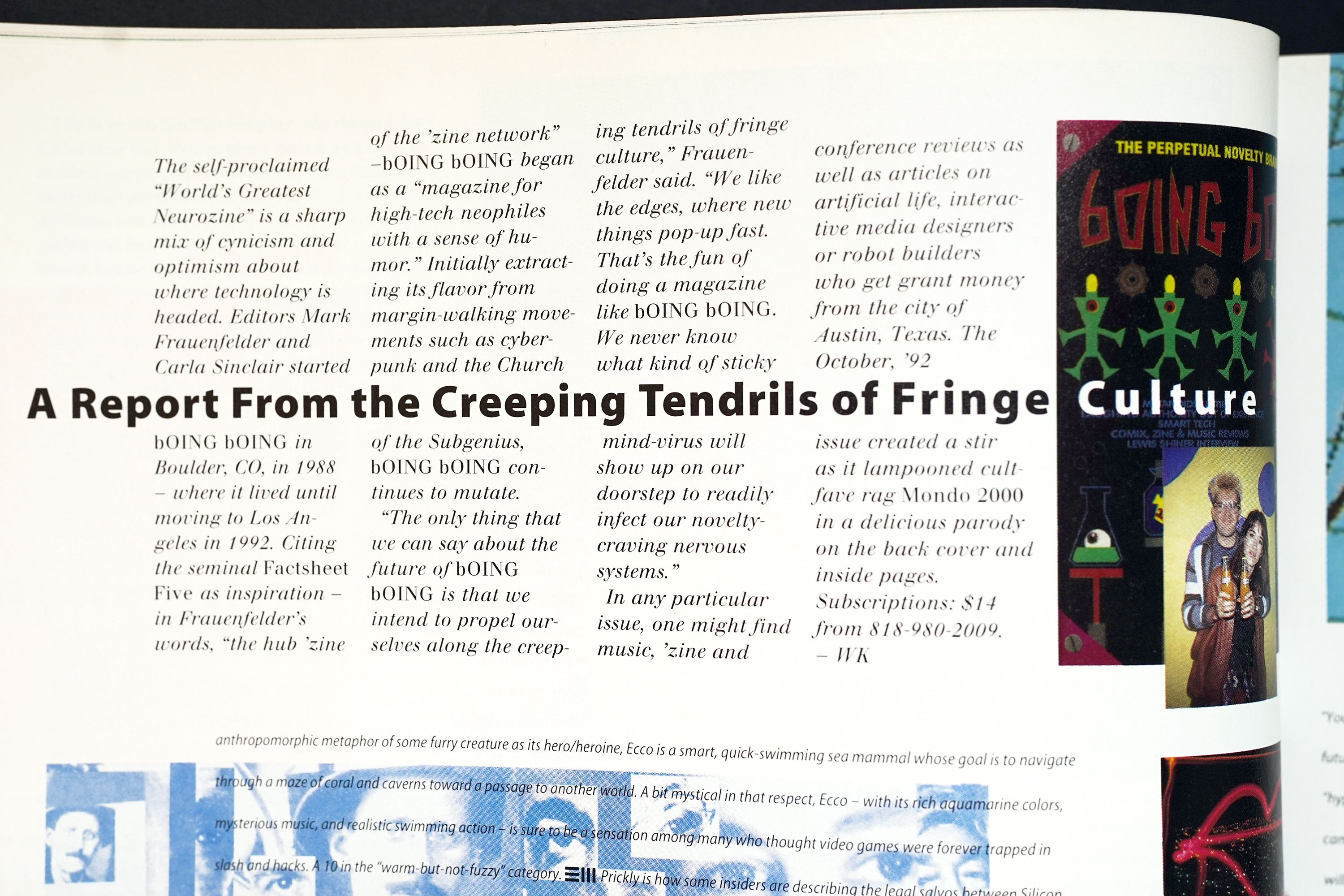
Yes, I know that there remain fringes of culture (some of which are older and more enduring than anything we know as normal) but, little did WIRED know in 1993, the internet would assimilate all fringe into The Culture.
In 1993, “geek” was a very niche subset of person, only beginning to be reclaimed as a moniker of power. In 2023, everyone is a “geek.” That would be weird to someone picking up WIRED Issue #1 from a newsstand.
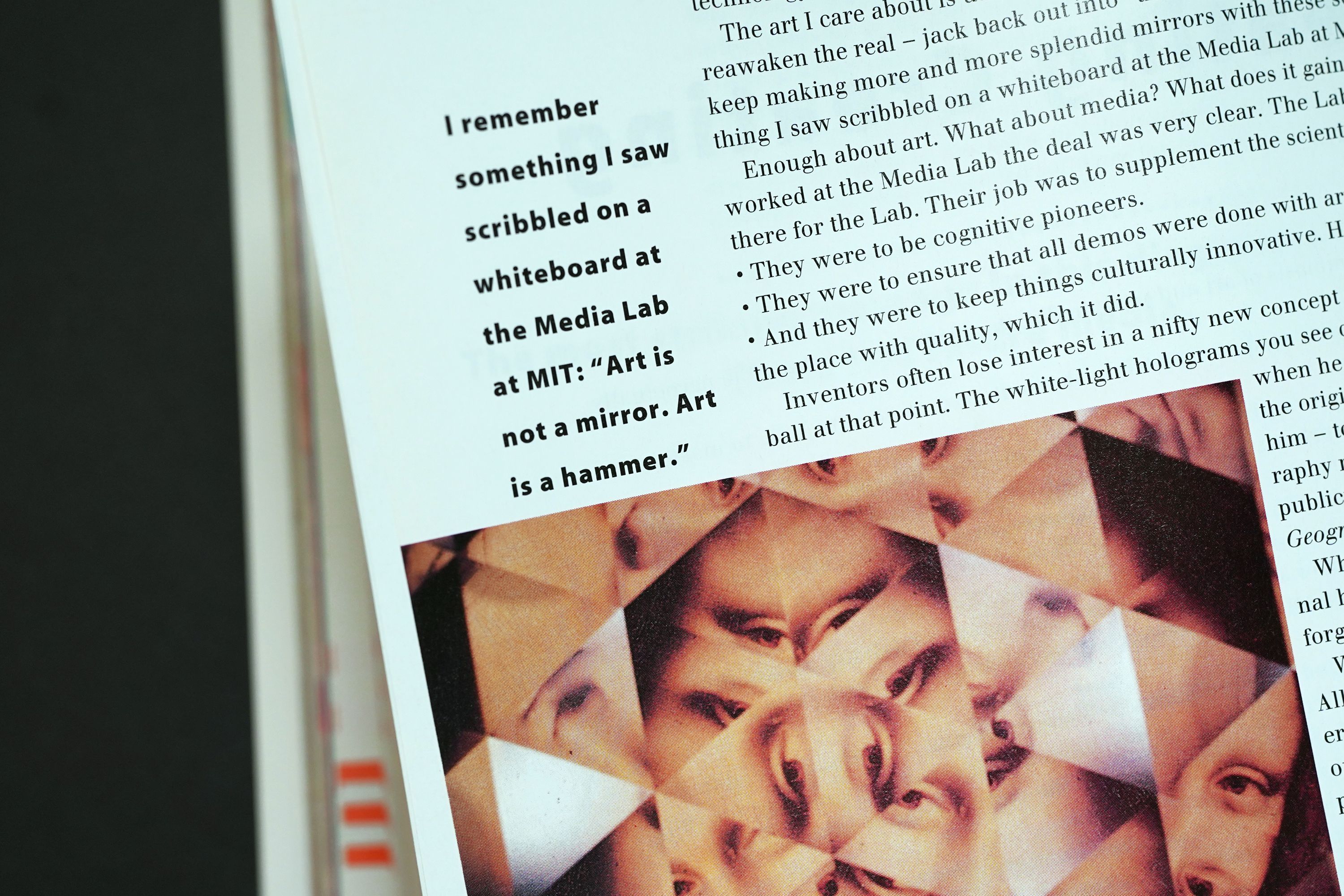
Stewart Brand was there (see above) — Kevin Kelly had worked with him at the Whole Earth Catalog — and I like that his contribution to this first issue was about art.
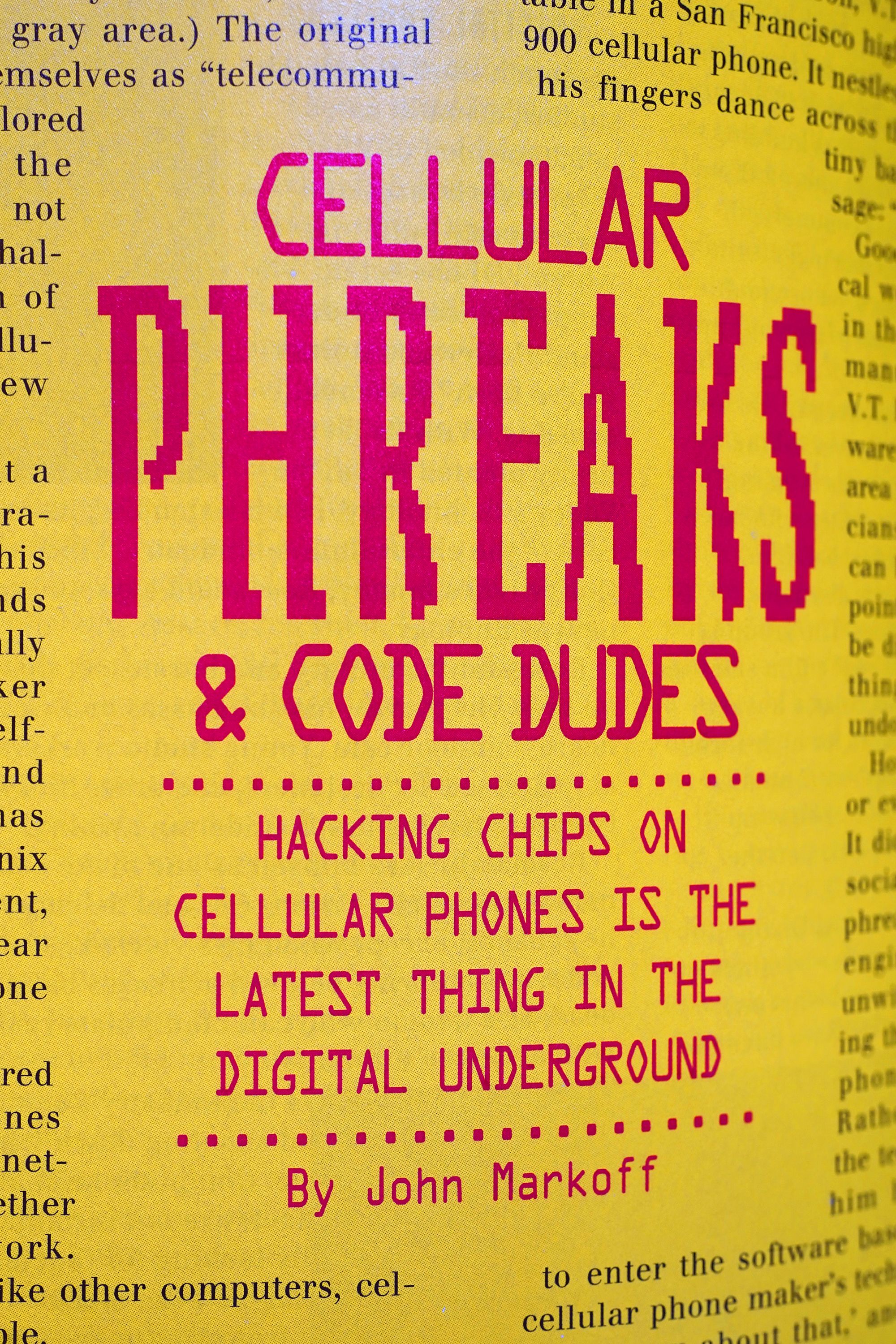
“Phreaks.” I’m here for all of it: the chip-hacking, the phones, the “digital underground,” and probably mostly, the typography.
Worth noting here that John Markoff, who wrote this piece, had come from InfoWorld and BYTE, had a long career with the NYT, and wrote an excellent book about early computer counterculture called What the Dormouse Said: How the 60s Counterculture Shaped the Personal Computer Industry.
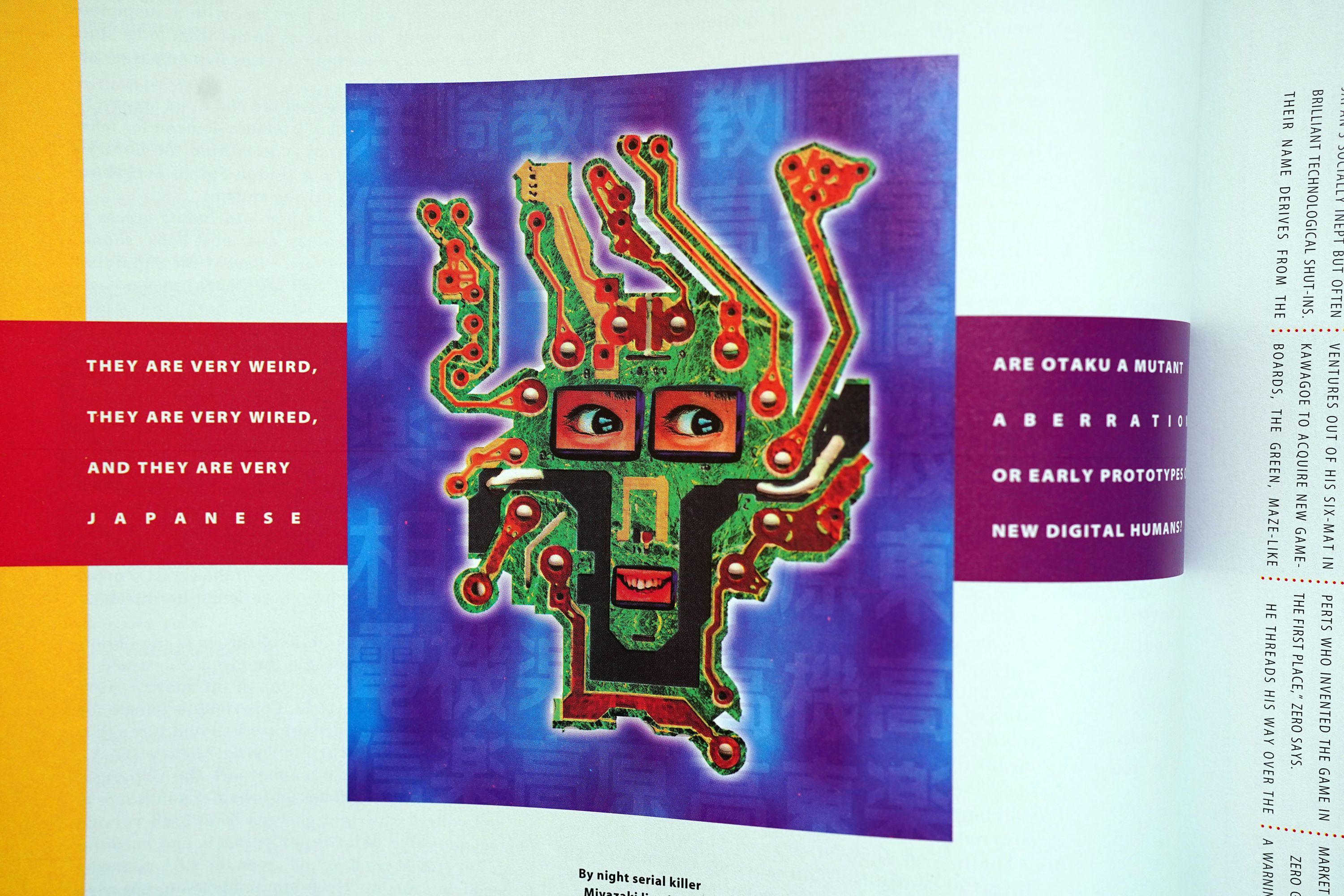
^ This was in there.
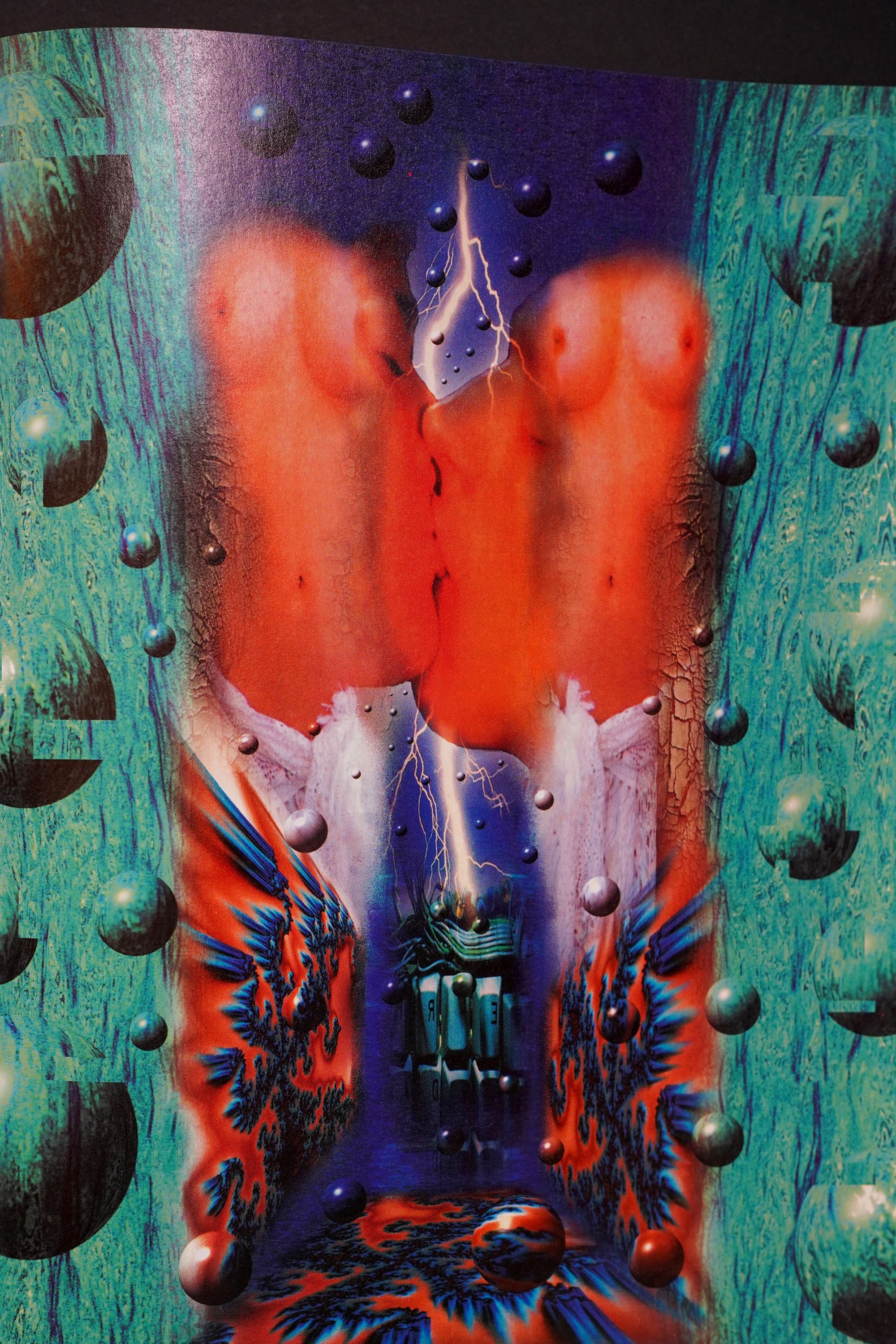
^ This too.
The WIRED of it All
The cover story of this issue was all about how the armed forces use technology. It’s well written, of course — Bruce Sterling has always been my guy — but it’s tough to process it thirty years later as not having missed the point.
Sterling dwells on the astounding expenditures of “slashed budget” military programs, like $2.5 billion for simulation tools and a ten-year plan to spend $350 billion on electronics R&D. He correctly points at the fact that the motivation for VR-ing warfare was as much about building an industrial monopoly as it was about helping the US win wars (and what’s the difference, really, anyway). That’s good analysis. But he also talks at length about the perceived strategic advantages of remote, digitally-controlled warfare without grappling with the moral after-effects — the ease of killing with the press of a button, the inhumanity of digitally projected targets, and the abstraction of it all that shields it from ethical incursion. Also, not a single mention of drones, though the first DoD contracts for autonomous weaponry were put to use in the first Gulf War, two years prior to this article.
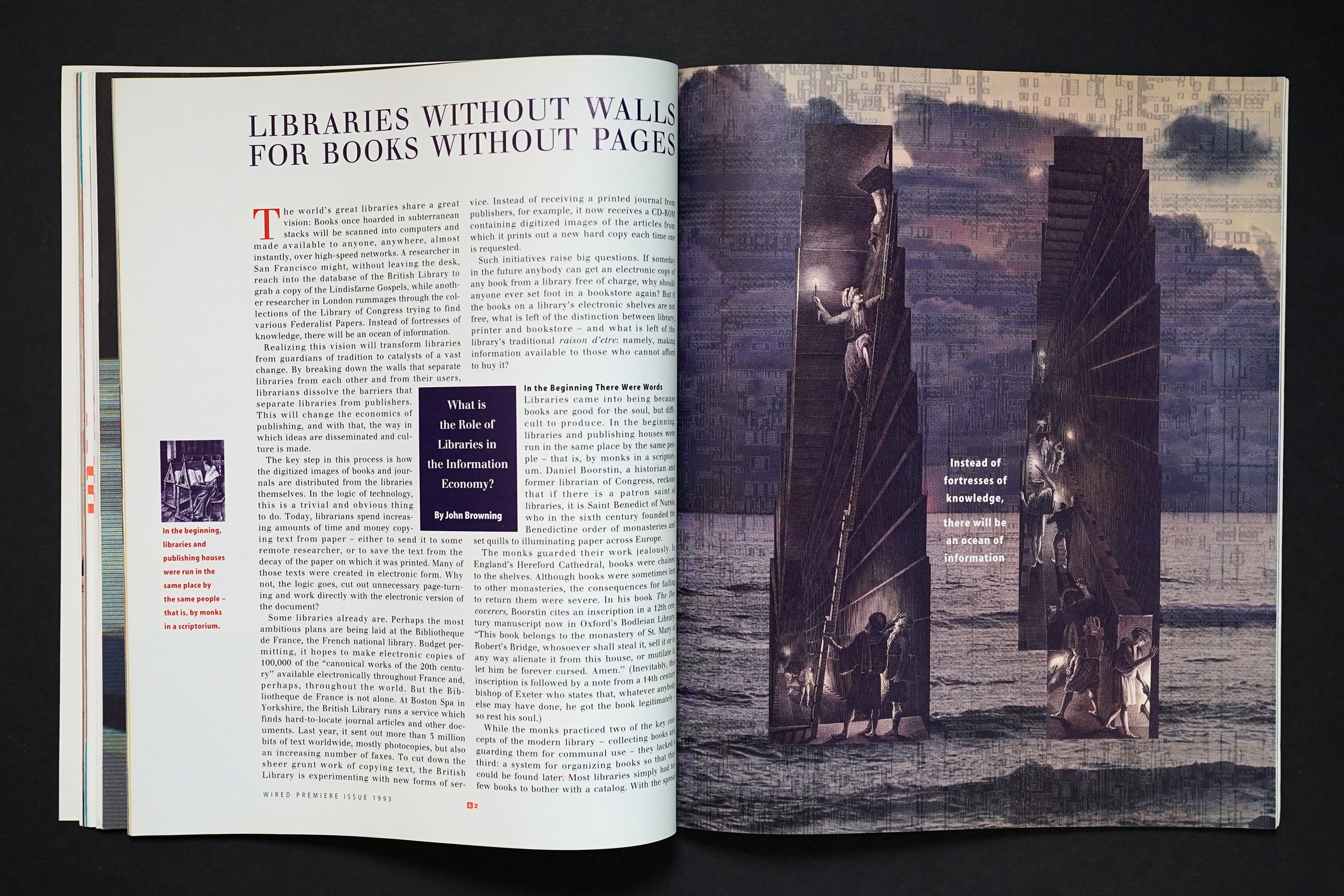
Had I been editor, I probably would have chosen John Browning’s piece on books in the Information Age as the cover story. I would have been wrong to do so, of course — war sells better than information theory.
But, Browning’s piece was essentially about what the next thirty years of culture would be about: the digitization of the written word, what that changes about how we communicate, how we store, share, and find knowledge, and how we understand each other and ourselves. It gets a little bogged down in the weeds of what an “electronic book” might be, but in all fairness, we literally spent the next twenty years on that specific thing.
The Ads
Advertising is often a more accurate reflection of culture than the artifacts a culture produces to represent itself. Nowhere is that more clear than on the pages of a magazine devoted to the culture of technology.

The whiplash between, for example, an article about putting chips in everything and creating mesh networks of objects and an advertisement for a fax machine is severe, but kind of amusing. The reader of 1993 would have been like, “fascinating stuff this ‘internet of things’ but I gotta send that fax.” I’ll also point out that the “internet of things” was not a widely known concept at the time — nor was it even a phrase used in the article. Bruce Sterling, author of the war article, would not publish his book Shaping Things, considered one of the more important IoT texts, until 2005.
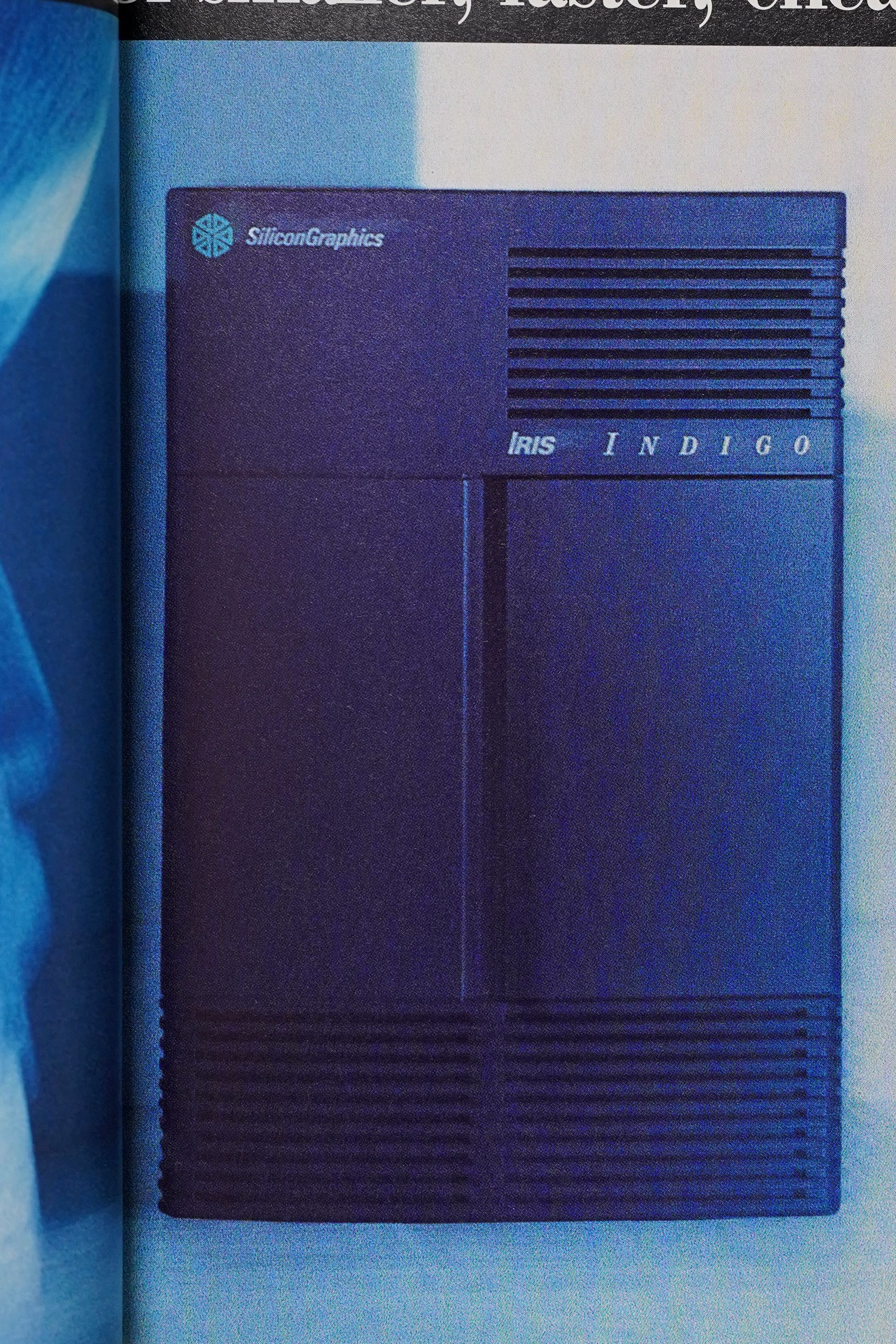
Similarly, if you had asked me — just a 13-year-old kid — or any of the major computer nerds that worked with my dad in his research lab what the sexiest computer available in 1993 was, we all would have said the same thing. Not a Mac. Of course not a PC. A Silicon Graphics machine. We’d cite Jurassic Park as evidence. We’d all have been heartbroken to learn what the next ten years would look like for that company.
The Receipt(s)
The first issue of WIRED carried a newsstand price of $4.95. You could subscribe for $19.95 for six issues, making it a pretty affordable piece of premium print.

In today’s money, that’s about $10 for a single issue, $42 for a subscription. But today, you can get 12 issues a year of WIRED for just $5. Newsstand price is, strangely, the same: $4.95. That’s a very weird thing that only 30 years of what 1993 WIRED was just beginning to understand can explain.
Christopher Butler, June 11, 2023
Filed under: Log